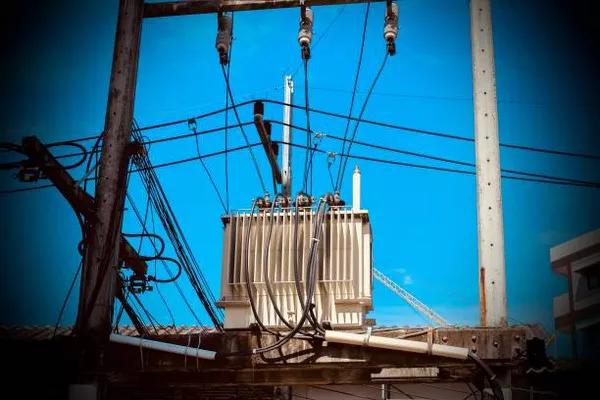Tap changers play a critical role in the functionality and efficiency of transformers, which are vital components of electrical power systems. To understand the significance of tap changers, it’s essential to grasp their purpose within the broader context of transformer operation and voltage regulation. In this article, we delve into the fundamentals of tap changers, their placement within transformers, and their role in ensuring stable electrical supply.
Transformers: An Overview
Transformers are devices used to transfer electrical energy from one circuit to another by electromagnetic induction. They can increase or decrease voltage levels, making them indispensable in electricity distribution networks. A typical transformer comprises primary and secondary windings around a magnetic core. The primary winding receives electrical power, which induces a magnetic field in the core, subsequently inducing a voltage in the secondary winding.
Voltage Regulation and Tap Changers
The primary function of tap changers is to regulate the output voltage of transformers. Electrical networks require stable and controlled voltage levels to ensure safe and efficient operation of electrical equipment. Tap changers facilitate this regulation by adjusting the transformer’s turns ratio, thereby varying the output voltage to match load requirements or compensate for changes in the input voltage.
Types of Tap Changers
There are two primary types of tap changers used in transformers:
On-load Tap Changers (OLTCs): These tap changers can adjust the transformer’s output voltage while it is in operation. OLTCs enable voltage regulation in real-time, allowing transformers to adapt to changing load conditions or input voltage fluctuations without interruption.
Off-load Tap Changers (OLTCs): As the name suggests, these tap changers require the transformer to be de-energized during adjustment. Off-load tap changers are typically used during maintenance or when significant adjustments to the transformer’s voltage ratio are necessary.
Where Tap Changers are Located in Transformers
Tap changers are strategically placed within the transformer structure to facilitate efficient voltage regulation. Their location depends on various factors, including the transformer’s design, size, and application. Here are the common positions where tap changers are found in transformers:
On the High-Voltage Winding: Tap changers can be located on the high-voltage winding side of the transformer. This placement allows for effective control of the output voltage supplied to the distribution network. High-voltage tap changers are crucial for managing variations in primary voltage and ensuring consistent secondary voltage levels.
On the Low-Voltage Winding: In some transformers, tap changers are positioned on the low-voltage winding side. This configuration is particularly useful for voltage adjustment closer to the load end, ensuring that end-users receive stable voltage levels regardless of fluctuations in the primary voltage.
Within the Transformer Tank: Tap changers are often housed within the transformer tank, which encloses all internal components of the transformer. This placement protects tap changers from environmental factors and ensures efficient operation within a controlled environment.
Internal Structure of Tap Changers
Tap changers consist of several key components designed to facilitate smooth voltage adjustments:
Tap Selector Switches: These switches allow operators to select different tap positions to achieve the desired voltage output. The selector mechanism must be robust and reliable to withstand frequent adjustments.
Tap Leads and Connections: Tap leads are conductive paths that connect the tap changer to the transformer windings. Proper insulation and connection integrity are crucial to prevent electrical faults and ensure efficient energy transfer.
Control Mechanisms: Tap changers are often equipped with automatic or manual control systems that regulate the selection and switching of tap positions. Automatic controllers can respond to real-time voltage variations, optimizing transformer performance under varying load conditions.
Importance of Tap Changers in Power Systems
Tap changers are integral to the stability and reliability of electrical power systems for several reasons:
Voltage Regulation: Tap changers enable transformers to maintain steady output voltages despite fluctuations in input voltages or load variations. This regulation is essential for preventing equipment damage and ensuring consistent performance of electrical devices.
Load Management: By adjusting tap positions, transformers can adapt to changing load conditions, optimizing energy transfer efficiency and minimizing power losses.
System Flexibility: Tap changers enhance the flexibility of power systems by allowing voltage adjustments to accommodate diverse operating conditions and requirements.
Conclusion
In conclusion, tap changers are essential components of transformers that enable precise control and regulation of output voltages. By strategically adjusting tap positions, transformers can adapt to changing electrical demands, ensuring stable and efficient power distribution. Understanding the role and placement of tap changers within transformers is crucial for optimizing the performance and reliability of electrical power systems. As technology advances, tap changers continue to evolve, offering enhanced functionality and automation to meet the demands of modern power grids.
In summary, tap changers are critical components in transformers, allowing for precise voltage regulation to meet varying load demands and maintain stable electrical supply. Their strategic placement within transformers ensures efficient operation and reliability of power distribution systems. Understanding the role and function of tap changers is key to optimizing transformer performance and ensuring the integrity of electrical networks.

